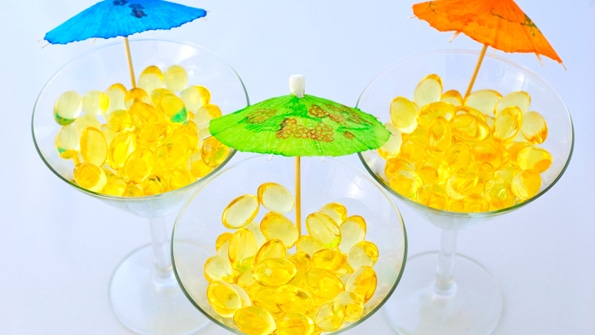But what about the other odd omegas?
How are omega-7s and omega-9s different from omega-3s?
January 15, 2015

I probably shouldn’t have been surprised. Nary one stray peep about an entire, potentially brain-busting category that only one year before had not only made the news—until it had passed the lips of no one less illustrious than Dr. Oz’s BFF himself: Mike Roizen.
The brain-buster? Omega-7s and omega-9s. In other words, “the little-known odd omegas.”
What exactly is important about omega-7s and -9s? How are they different from omega-3s?
“Neither omega-7 nor -9 fatty acids are essential,” said Francine Schoenwetter, audience development director at New Hope Natural Media. She continued:may ne
“They can be produced by the body, so the demand will never meet that of omega-3 and -6, which have to be ingested. Omega-9 is beneficial, but it’s produced by the body with the ingestion of unsaturated fats, which are cheap and plentiful.
Omega-7 can also be produced by the body. I am seeing increased use of supplemented omega-7, palmitoleic acid, in products ranging from topical to supplements targeting heart health, skin, weight. Omega-7 is vegetarian and, as far as I’ve seen, only comes from sea buckthorn and macadamia nut, and a little in dairy milk fat. There is a different action on the body than omega-3 or -6. Research is showing clear benefits to supplementation, although it does not produce enough for protective and therapeutic value. With the sources limited and the fact it is not essential, I don’t foresee the demand ever reaching close to omega-3s and -6s. We’ll see omega-7-enriched products in higher-end supplements and personal-care products."
Although the odd omegas such as omega-5 and omega-9 are worth further exploration, neither compound is likely to need additional dietary supplementation.
I also took the question to the imminent food chemist Kantha Shelke, PhD, principal of Corvus Blue food consultancy, who said:
“Nutrition science is still in its infancy and is still discovering a number of nutrients that can be beneficial to the body. Science is discovering several nutrients that are not essential, but which should not be interpreted as unimportant. But it is also risky to extrapolate importance into dousing oneself with the material. Just because something is good for us, more of it is not necessarily better; it may actually be harmful.
Omega-5 and omega-9 mirror the omega-3s and omega-6s, but also have other important properties. In addition to supporting membrane fluidity by integrating into the phospholipid network, they help maintain cholesterol balance, regulate insulin sensitivity, and have anti-arthritic, anti-obesity, and anti-proliferative properties. Fortunately for us, the odd omegas occur naturally in many foods, and a diet with variety can help without the need for supplementation.”
Diana Cowland, health and wellness analyst for Euromonitor International, agrees that omega-7s and omega-9s are still relatively unknown to many consumers. “The products marketing the benefits of these particular omega fatty acids remain predominantly in health food stores,” she said. “As a whole, I would say that many consumers have yet to truly understand the difference between the omega fatty acids.”
Because they are non-essential fatty acids that originate from plants, Cowland doubts omega-7s or -9s will ever gain the same attention as omega-3s. One exception might be olive and rapeseed (canola) oils, both of which are used for cooking; both are high in omega-9s, and they appear to be getting some traction.
Ingredient suppliers enter omega-7 and -9 space
There are a variety of ingredient suppliers who have entered the omega-7 and omega-9 business. They include:
Omega-7 suppliers: Anderson Global Group: Provinal Purified Omega-7 from fish oil is the only Omega 7 patented and backed by source specific clinical studies; FLAVEX specializes in CO2 supercritical processing, which is beneficial for retaining constituent profile and reducing heat exposure; NP Nutra; JIAHERB; Draco Herbs; and DNP International.
Omega-9 suppliers: Innobio (Vhina); NP Nutra; also seen in supplemented cooking oils, Dow and others produce – High Oleic Low Linolenic; FLAVEX; Bioriginal; and Martek.
Schoenwetter has also heard some promising reports about Ahiflower oil, “which apparently contains omega-3s in its profile, which is very unusual for a plant-based source,” she said. “Ahiflower oil has a high level of stearidonic acid (SDA) and GLA. The SDA converts to EPA. One supplier is Technology Crops International (TCI), certified organic.”
Like what you read? Learn more about the omega-3 sector in the new NBJ/Engredea report, "Omega-3s: How will industry respond to the crisis in sales and consumer confidence?"
About the Author(s)
You May Also Like




